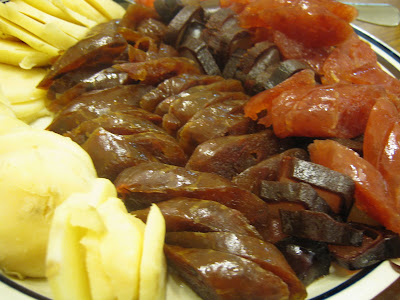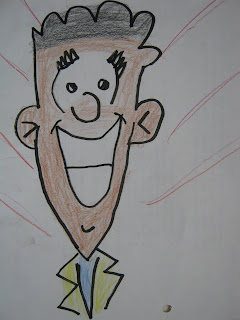One of the first things I discovered as a noob badminton mum (as opposed to the soccer mum), was that not all sports are created equal. I'm not talking about prestige or sports techniques - I'm referring to the psychological impact on the child. This is most apparent when we compare team sports vs individual sports. Simply put, in a team sport, the pressure to win is shared among all the players whereas in individual sports, the responsibility lies squarely on one person. One of Andre's friends dropped out of badminton and switched to hockey instead because he didn't like the pressure that came with an individual sport.
Even among individual sports, there are differences and this is purely from my observation. In sports like swimming, track and field or wushu, the focus is on individual performance, bettering a record or clocking a time. There is less of a sense of "losing" a game vs you merely didn't win. Whereas with sports where you directly compete against someone, eg. racquet sports, judo or fencing, the focus is on defeating your opponent. Either you win or you lose.
These one-on-one, face-to-face matches require a certain level of self-confidence and nerve, as I discovered. In December last year, we signed Andre up for a badminton competition. This being his first competition, he had no idea what to expect. He didn't know what the procedures were, even when to switch courts or take a water break. Unfortunately, he met a very strong opponent in the first round who obviously had matches under his belt, and was decimated. Halfway through the match when it was clear that Andre was losing, his shoulders slumped and we could tell that he had given up. He was devastated at losing the match and cried himself to sleep that night. This being the first experience for us parents as well, we were not prepared on how to handle the situation.
It was then that I realised just how big an emotional toll competitive sports can have on kids. For these youngsters, we can spout competition for the experience and sportsmanship but chances are, they just want to win. In the inter-school badminton competition, I saw signs of this everywhere. More than one child, after losing a match, broke down. In fact, the self-confidence was so fragile that often, when they lose one set, they almost always concede the second set easily. Only those with more experience or maturity were able to keep their cool and fight back.
Think about it, even professional athletes have been known to break down in defeat, let alone 9-year-olds. I remember watching the classic 1992 French Open finals between Steffi Graf and Monica Seles. It was closely fought and when Seles eventually pipped her rival to take the title, Graf was practically in tears.
I'd previously voiced my opinion to the head of PE in Andre's school that sports shouldn't be about winning (when he was considering scrapping badminton as a CCA) and he made this comment, "That's true but it's very demoralising for kids to keep losing." Much as I want to dismiss this as glib, I now know this has an element of truth. While sports shouldn't just be about the medals, to have a continuous streak of losses is extremely demoralising, especially for young kids. It takes a very determined and self-assured individual (plus supportive parents) to be able to pick himself up every single time and go on.
And here's the rub: there's a chance that certain kids may never be able to perform at the winning level - there are no guarantees in sports. How many losses will it take to completely erode a child's self-esteem? That's why I was so thankful that Andre managed to win a couple of matches - it's easier to learn how to lose when you've won some.
A friend whose son is a secondary school tennis player told me she hates watching his matches because it's so hard to see him lose, sometimes due to bad sportsmanship on his opponent's end. When he was in primary school, sometimes after he had lost a match, he would come home and cry bitterly. Today, he's doing very well but make no mistake about it, it's a tough road.
I think as parents, if our kids choose this path, we have to be mentally prepared. Competitive sports for kids in Singapore can be pretty ruthless. At the badminton inter-school tournament, one mother overheard a coach telling his students, "Remember, the face is the target. Aim for the target." It's not illegal, just very aggressive play. Sometimes, there's even a complete disregard for sportsmanship. I blame this on a culture that constantly emphasises and rewards winning.
Andre's badminton coach feels that Singapore stresses too much on competitions - he thinks there's plenty of time for that later and that the focus should be on laying the foundation for a love of the sport and developing skills instead. Ang Peng Siong, ex-national swimmer and swim coach, cautions against putting kids through intensive sports training too early as there is a risk of burnout due to physical and mental immaturity.
I hear this all the time, that sports is great for character moulding and I agree, but I believe that not every child is suited for COMPETITIVE sports. Some kids cannot handle the pressure, others are just too sunny and placid to muster that important "killer instinct", some just don't have the drive. Yet some others may simply need more time to mature.
These are my reflections based on my own observations. Our decisions for Andre are also largely influenced by his personality and his passion. So this is the only advice I can offer - to take the cue from your child's disposition and interests, and decide whether this is a suitable route for him.























